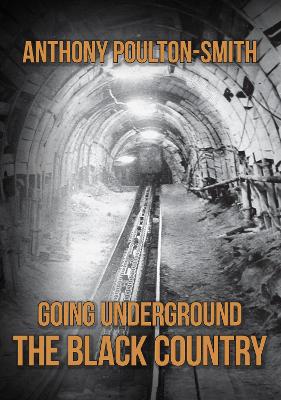Going Underground
2 total works
Beneath the surface of the Potteries lies a little-known world that encompasses the history of the six towns that historically make up this area – Stoke, Burslem, Hanley, Fenton, Tunstall and Longton and the conurbation in North Staffordshire that has grown from these towns. The towns are closely linked geographically and also through their association with the ceramic industry, when the area became the biggest producer of pottery in the country during the eighteenth and nineteenth centuries. Caves and underground tunnels can be found throughout the area and man-made excavations lie beneath the towns that were forged in the Industrial Revolution.
In this book local historian Anthony Poulton-Smith takes readers on a tour of the Potteries towns and immediate surrounding area underground, exploring natural and man-made caves, canal and railway tunnels, hidden routes and cellars with a story to tell, passageways from houses, churches, hotels and pubs, and secret military installations. The stories include the bizarre and tragic, and this fascinating portrait of the Potteries underground will interest all those who know the area.
In this book local historian Anthony Poulton-Smith takes readers on a tour of the Potteries towns and immediate surrounding area underground, exploring natural and man-made caves, canal and railway tunnels, hidden routes and cellars with a story to tell, passageways from houses, churches, hotels and pubs, and secret military installations. The stories include the bizarre and tragic, and this fascinating portrait of the Potteries underground will interest all those who know the area.
Beneath the surface of the Black Country lies a little-known world that encompasses the history of the towns that historically make up this area in the boroughs of Dudley, Wolverhampton, Walsall and Sandwell. The area was associated with coal mining and metalworking for centuries but during the Industrial Revolution it became known for the heavy manufacturing industries concentrated there and the pollution associated with these industries. The last coal mine closed in 1968 and much of the heavy industry has gone but the Black Country still has a strong sense of identity today and the way of life in the past can be glimpsed in the Black Country Museum.
In this book local historian Anthony Poulton-Smith takes readers on a tour of the Black Country underground, exploring natural and man-made caves, potholes, canal and railway tunnels, mines, hidden routes and cellars with a story to tell, passageways from houses, churches, hotels and pubs, former nuclear bunkers and old air-raid shelters. The stories include the bizarre and sad and this fascinating portrait of the Black Country underground will interest all those who know the area.
In this book local historian Anthony Poulton-Smith takes readers on a tour of the Black Country underground, exploring natural and man-made caves, potholes, canal and railway tunnels, mines, hidden routes and cellars with a story to tell, passageways from houses, churches, hotels and pubs, former nuclear bunkers and old air-raid shelters. The stories include the bizarre and sad and this fascinating portrait of the Black Country underground will interest all those who know the area.

